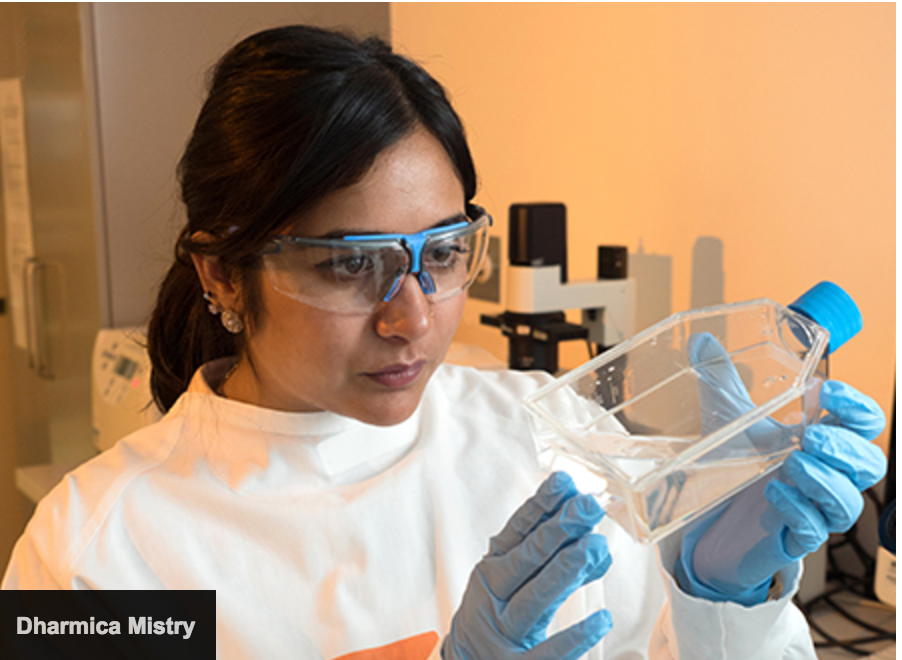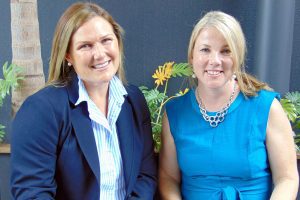It was pure chance that led Dr Dharmica Mistry to make the discovery that could change the lives of millions of people affected by breast cancer. Since that day, Mistry has left nothing to chance. She’s dedicated the past nine years of her life to developing that scientific breakthrough.
Her goal? To provide a simple, affordable, non-invasive and accessible blood test to detect breast cancer in women and men. Mistry had finished her Bachelor of Science from Sydney University, majoring in Microbiology, and was working at a company investigating a peculiar thing – the association between breast cancer and hair. She regularly used strands of her own hair during tests to compare against the hair of patients who have breast cancer. But one day her hair returned a disturbing result. It was showing the same properties of the hair of a cancer patient.
“But I knew I didn’t have cancer, and no family history of it,” says Mistry.
“My Chief Scientist Dr Peter French asked me what I’d been doing to my hair.”
The only thing Mistry could remember doing was massaging olive oil through her long hair as a moisture treatment.
“We realised it was the oil … and that’s the pivotal experiment that changed everything.” she says.
From hair to blood
From that experiment, Mistry and Dr French established there was a specific set of lipids associated with breast cancer.
“At their most basic, lipids are just a type of fat,” says Mistry.
While the initial tests were on hair, Mistry and her team have now streamlined the science to test blood instead.
“The theory is that if a tumour is excreting these lipids that get to the hair, they’re going through the bloodstream to get there,” says Mistry.
“We’re looking at phospholipids, which make up the walls of our cells. For people with breast cancer, these are the lipids that are changing, which we can see in our studies. Essentially you could say that these lipids are tumour-derived. They’re cancer-specific”
Changing lives everywhere
From a patient’s point of view, Mistry’s Breast Cancer Associated Lipids (BCAL) test is no different from going to get a blood test.
But the results of the BCAL test are significantly different to current diagnosis methods for breast cancer. BCAL Diagnostics’ proof-of-concept studies indicate an accuracy rate of 90 per cent.
It’s a major difference when compared to mammography, which has a 65 to 80 per cent accuracy rate depending on a woman’s breast density.
While mammograms are a brilliant, life-saving technology, they are only targeted at women between the ages of 50 and 74 years old. They can be difficult to access for women outside major cities, and patients often require further testing for unclear results.
“That can get really expensive,” says Mistry. “We’re hoping our tests can give more biological information to clinicians so they can make more informed decisions.”
For younger women, usually the first way they find out they have a cancer or something unusual in their breasts is through a physical examination.
“That just seems crazy when we have so many medical advances in this world,” says Mistry. “As a young woman, I want something all women can use, all around the world. Something that’s more accurate, cost-effective and accessible.”
Biotech startup
In 2010, Mistry co-founded a biotech company in Sydney called BCAL Diagnostics, with Dr French and two angel investors, the Hon Ron Phillips and Jayne Shaw.
The company funded Mistry’s PhD at Macquarie University, which further investigated and proved the theory that there were significant changes in lipids in the blood of patients with breast cancer.
“BCAL Diagnostics is privately funded by about a dozen high-net-worth individuals and we have a board of four members who volunteer their time,” says Mistry.
“I’m the only full-time employee and we have one part-time employee who is helping us develop our commercialisation pathway. So it’s quite lean, like a startup.”
In 2016, Mistry was named the NSW Young Woman of the Year, and awarded a Young Executive of the Year title by the Australian Financial Review.
This daughter of migrants has taken nothing for granted.
“My Dad was born in Kenya, and he was one of 10 kids. My Mum was raised in England, but came from a humble background. They never had the opportunities I had. Neither of them had access to a tertiary education.
“They worked really hard and took a leap of faith coming to Australia in 1992. And my brother and I have, as a result, really benefited from their support and open mindedness.”
International collaborations
During Mistry’s PhD in 2012, she discovered a group of scientists at the University of Louisville in the United States were working on the same hypothesis as her.
“It is such a novel idea, so I had to get in touch with them,” says Mistry.
Those researchers (who have now moved to the University of Kentucky) were looking for a corporate partner to help commercialise their research. BCAL Diagnostics brought them on board and they have been collaborating on research and trials.
“We’ve got a blind study coming out soon, which would allow us to get the test to formal clinical trials. We need to tick a whole bunch of boxes in terms of meeting regulatory approvals over the next 18 months,” says Mistry.
Future potential
The team has a small amount of evidence to show that their test can detect other types of cancers too – yet another potentially groundbreaking piece of science they will be investigating further.
Mistry is aiming to launch the BCAL test in 2018, and hopefully in the Australian market first, because “it’s a home-grown product”.
But her future vision for the test is far bigger.
“It’s been a long process until this point, but the thing that’s really exciting and motivating for me is knowing the potential impact it can have for women all over the world,” says Mistry.
This article was originally published on Australia Unlimited and is republished here under Creative Commons.





















Add Comment